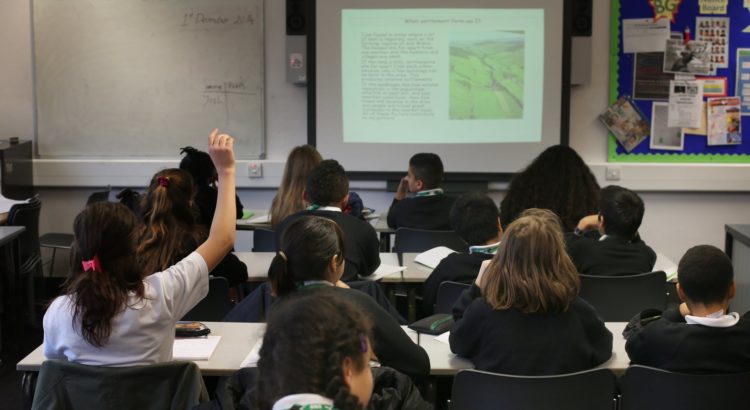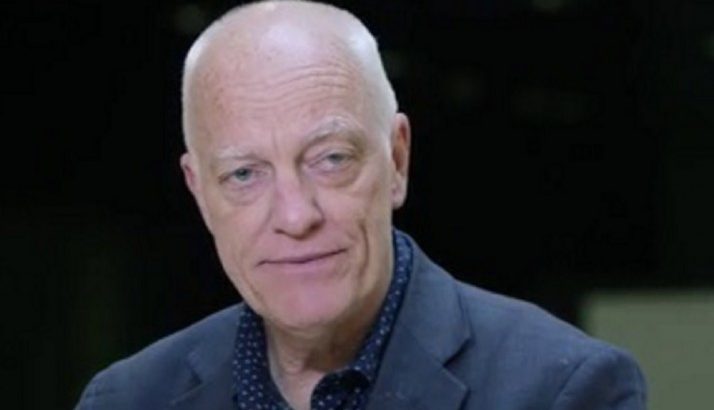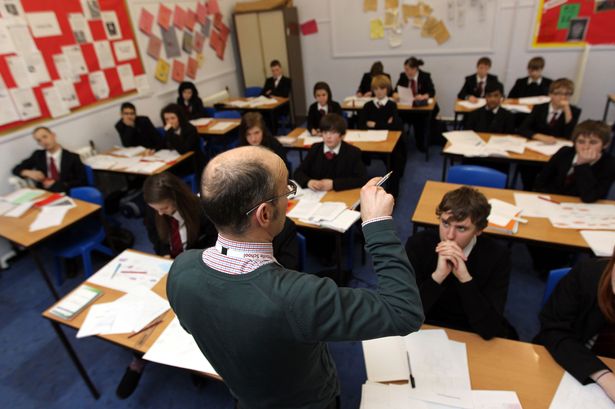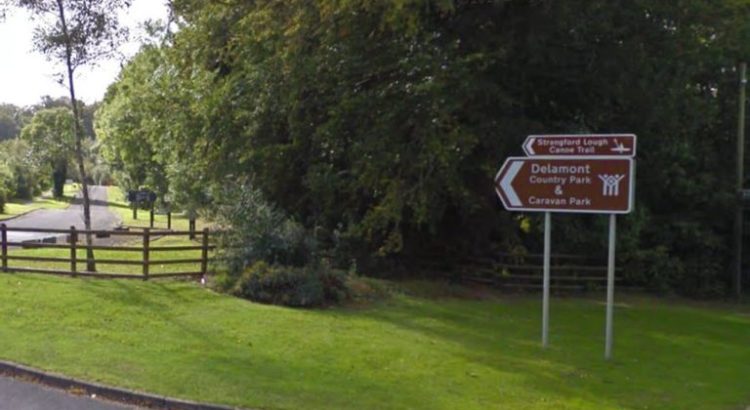Entrevista a Mike Savage / Autor de ‘Social Class in the 21st Century’
Más allá de las diferencias históricas entre la clase media y la clase orbrera, hoy en día la distancia entre las élites y el precariado (aquellos que luchan por salir adelante a diario) es abismal. Esta es la tesis central de la obra Social Class in the 21st Century (Pelican), escrita por Mike Savage, catedrático de Sociología de la London School of Economics.
A partir de una encuesta realizada junto con la BBC (The Great British Class Survey), en la que se preguntaba a los participantes sobre su percepción de pertenencia a un grupo o clase social, sus gustos culturales (capital cultural), sus vínculos sociales (capital social) y sus rentas, ahorros y patrimonio (capital económico), Savage plantea la evolución de la idea tradicional de sociedad de clases y su actual retrato en Reino Unido.
Entre otros temas en su libro se abordan la divergencia cada vez mayor entre la élite dominante y los más desfavorecidos, y entre generaciones, la difuminación de la clase media y la dificultad de encontrar una clase obrera que se considere como tal. Savage responde por teléfono a CTXT a una serie de preguntas sobre estas y otras cuestiones.
¿Cómo se ha llegado a esta gran divergencia entre la clase dominante y las clases más pobres en Reino Unido?
El caso británico es particularmente chocante por el declive de la industria y del sector manufacturero. Hace 30 o 40 años teníamos a mucha gente trabajando en las minas de carbón, en las atarazanas, en el textil, en la siderurgia. La mayoría de estos sectores ha desaparecido o son muy pequeños en la actualidad. La tecnología se ha llevado por delante muchos trabajos manufactureros tradicionales. Hay una demanda cada vez menor de trabajos manuales cualificados, pero al mismo tiempo la globalización demanda empleos en sectores como la banca y las finanzas. La globalización ha permitido a Londres ser un centro financiero global. Las tendencias globales han llevado a esta divergencia entre la élite y los más desfavorecidos.
Al hablar de capital social en su libro, plantea que existen determinadas cuestiones, como ir a la universidad o Linkedin, que permiten una cierta democratización de este capital social. ¿Hasta qué punto esa democratización es real?
Hay una demanda cada vez menor de trabajos manuales cualificados, pero al mismo tiempo la globalización demanda empleos en sectores como la banca y las finanzas
La tesis es que aunque parece que ahora somos más capaces de establecer redes sociales –los medios de comunicación social nos permiten tener más conexiones–, en realidad el capital social es bastante determinante. Y hay quienes disponen de los vínculos clave que permiten obtener el beneficio del capital social. En el libro nos interesa particularmente la manera en que las universidades de élite tienden a ser muy importantes en generar capital social de alto nivel, pero también la forma en que la élite británica se encuentra en Londres y en el sureste del país. Hoy en día, si quieres tener acceso a la élite o formar parte de ella, necesitas estar asentado en Londres. No solía ser así hace 50 años cuando teníamos élites, o élites locales, en diferentes partes de Reino Unido. Pero las cosas se han organizado mucho más en torno a la gran metrópoli.
También menciona que la meritocracia es un cuento.
En Reino Unido siempre ha existido la idea de que, si recibes más educación, si tienes más y mejores escuelas y universidades, eso permitirá la movilidad social, que los hijos de la clase obrera progresen en la escala social. Pero lo que ha pasado, de hecho, en Reino Unido es que, cuanta más educación y más universidades tenemos, más desigualdad ha habido en la educación. Lo que ha pasado es que las universidades y escuelas de élite son más efectivas a la hora de permitir a los jóvenes que empiecen sus vidas desde una mejor posición. La educación está bien y es positivo educarse, pero la educación por sí sola no va a resolver el problema de la desigualdad.
Y estudiar en esas universidades de élite es extremadamente difícil a menos que ya formes parte de la élite.
Correcto. Es muy difícil entrar en las universidades de élite, y los jóvenes que proceden de escuelas elitistas están mejor posicionados para entrar en esas universidades, así que es como un círculo vicioso.
En el libro habla sobre el precariado y, aunque no inventa el término, sí desarrolla el concepto. Actualmente, ¿podríamos considerar como parte del precariado a los hijos de la clase media que fueron a la universidad pero no encuentran trabajo acorde a sus capacidades?
Creo que no, no estarían en el precariado. Una de las clases de las que hablamos en el libro es la que llamamos “trabajadores de servicios emergentes”. Son personas que, en muchos casos, han ido a la universidad, que están bastante capacitados, pero no tienen todavía una carrera profesional asegurada, y por tanto van cambiando de trabajo. Pero quienes están en el precariado están realmente en la parte más baja de la sociedad, trabajando en tiendas, en trabajos de seguridad y vigilancia, y en general no tienen estudios universitarios. Es un tipo distinto de precariedad. Nosotros utilizamos términos distintos para diferenciar entre quienes vienen de clase media, con estudios universitarios probablemente, y el precariado, que va pasando de trabajo temporal en trabajo temporal, empleo informal, lo que llamamos contratos “de cero horas”, con pocas capacidades y pocas perspectivas de desarrollar una carrera profesional. Y son distintos, yo creo, de quienes han ido a la universidad, que puede que estén encadenando trabajos temporales ahora, pero tienen expectativas de moverse hacia unos puestos de trabajo más afianzados para desarrollar una carrera profesional más adelante.
¿Estamos viviendo el fin de una tendencia en la que las nuevas generaciones solían vivir, como mínimo, igual de bien que las anteriores?
La mayoría del precariado trabaja, pero lo hace en condiciones inestables
Sin duda. Los jóvenes están experimentando muchas dificultades en Reino Unido; la diferencia entre jóvenes y mayores se está ampliando mucho. Si eres un joven en la veintena ahora, puedes esperar tener un modo de vida peor que tus padres hace 30 años. Es una de las contradicciones de la desigualdad contemporánea: la diferencia generacional. Los pensionistas de una determinada edad tienen sus planes de pensiones, y ya pagaron sus casas. Pero los jóvenes tienen dificultades para comprar una casa o incluso para pagar un alquiler y han sido desplazados del mercado inmobiliario. Es un gran problema.
¿Cuál es la inclinación política del precariado?
En nuestro estudio, el precariado estaba bastante desilusionado, era bastante escéptico respecto a la política. Sin duda lo era respecto a la política oficial del Partido Laborista y del Partido Conservador. Tenemos la imagen de un cambio hacia una política más populista, que se ha podido ver en el Brexit. Mucha gente del precariado no se sentía atraída por vivir en Europa porque no veía qué ventajas le ofrecía personalmente el hecho de quedarse en Europa, y también había preocupación por la inmigración. El precariado no es particularmente de izquierdas, tiene mucho más que ver con una visión cortoplacista, se siente más atraído hacia políticas y líderes anti-establishment.
¿Diría que el Brexit fue un voto de clase?
No sólo de clase, pero sí que la clase fue uno de los elementos, junto con el miedo a la inmigración, la raza… Los resultados del referéndum muestran que fueron quienes vivían en zonas pobres los que se inclinaron por abandonar la UE. Las personas que vivían en zonas con más inmigrantes y un nivel de estudios superior tendieron a votar a favor de permanecer.
Comenta que la mayoría del precariado no ve ventajas en ser parte de la UE pero, al mismo tiempo, depende del sistema público del bienestar, que difícilmente no se verá afectado por esta decisión.
Tenemos esta imagen de gente que vive de las prestaciones del Estado, pero la mayoría de los que están en paro y cobran la prestación por desempleo lo hacen solo un par de meses mientras buscan otro trabajo. En realidad, la mayoría del precariado trabaja, pero lo hace en condiciones inestables. Una pequeña parte sí vive de estas prestaciones, pero la mayoría de la gente pobre o precaria sobrevive con trabajos temporales y mal pagados.
¿Cree que los resultados hallados en su investigación podrían generalizarse al resto de Europa?
Creo que hay diferencias entre países. El caso británico es probablemente extremo, pero hay un patrón común: a la clase dominante le va bien y está muy separada del resto, sobre todo de los pobres, del precariado. Imagino que en España el precariado es probablemente más grande que en Reino Unido porque el desempleo es mayor, pero esa diferencia cada vez mayor entre el precariado y las élites es bastante común en muchos países de la UE. En medio, según la estructura de clases, se ven grupos sociales bastante complejos y fragmentados. Así que, aunque los detalles pueden variar, el modelo general de una mayor división entre la parte más alta y la más baja de la sociedad está bastante extendido.
¿El aumento del precariado explicaría el auge del populismo en Europa en general?
Sí, sin duda. El populismo también está rechazando las élites. Creo que en muchos países, conforme la élite ha ido decepcionando a la gente, muchos se han inclinado por opciones más populistas. Se vio claramente en la política italiana, por ejemplo, con el Movimiento 5 estrellas. Es una cuestión bastante vigorosa.
En su obra menciona las políticas conservadoras de Margaret Thatcher y cómo cambiaron la mentalidad hacia el “si eres pobre, es porque no haces lo suficiente para no serlo, por tanto, es culpa tuya”. ¿Dónde estaba el Partido Laborista cuando los conservadores estaban haciendo todo este trabajo mental para convencer a la gente de que es culpa suya ser pobres?
La diferencia cada vez mayor entre el precariado y las élites es bastante común en muchos países de la UE
El Partido Laborista gobernó durante la mayor parte de los setenta, y era un partido bastante de izquierdas –según los estándares actuales, sin duda–. En cierto modo, Thatcher tenía mucho que ver con derrotar esa visión del Partido Laborista. Y lo que pasó en el corto plazo es un poco lo que está pasando ahora con Jeremy Corbyn: el partido se movió hacia la izquierda a principios de los años ochenta, y ese giro no atrajo al votante de centro, así que en las elecciones de 1983 los laboristas sufrieron una seria derrota frente al Partido Conservador. A finales de los noventa, Tony Blair trató de relanzar el Partido Laborista con el movimiento New Labour, posicionando el partido en un terreno más centrista. Es discutible si no lo movieron incluso demasiado hacia la derecha. Creo que en los noventa los laboristas podrían haber tenido políticas más socialdemócratas, pero Blair era un político muy eficaz. Lo que ha pasado ahora es que Jeremy Corbyn ha vuelto a inclinar el partido hacia la izquierda, rechazando esa visión de Tony Blair, pero ese tipo de visión izquierdista de los ochenta no es ya tan atractiva para el electorado, en parte porque es difícil volver a un modelo de país manufacturero.
Pero esa es la tendencia que hemos visto en Europa en general. Los llamados “partidos socialistas” ya no lo son.
En muchos países la derecha y las fuerzas nacionalistas se han apropiado el populismo. Y la izquierda, que se podría pensar que sería capaz de hacer un giro populista atractivo, no ha sido capaz de hacerlo. Creo que las expectativas del Partido Laborista en estos momentos son bastante bajas, porque ahora mismo atrae a dos tipos de votantes: clase media urbana con estudios, partidaria de la inmigración y de Europa, bastante liberal; pero también a votantes de las zonas industriales, que son más antiinmigración, antieuropeístas. Es difícil atraer a ambos grupos, y eso explica por qué no ha tenido buenos resultados recientemente.
¿Hay alternativa para la izquierda?
Creo que sí, creo que hay una sensación entre el electorado de que debería haber más redistribución, que defiende que las personas pudientes paguen más impuestos. Plantearlo de esta forma podría atraer más votantes. El gasto en bienestar, en cambio, es más controvertido. Ed Miliband, el líder laborista tras Gordon Brown, desplazó el partido un poco hacia la izquierda, y presentó elementos de redistribución sin perder de vista las identidades populares, pero perdió las elecciones. Creo que la cuestión de Europa ha sido muy controvertida en la política británica por razones obvias. El Partido Laborista bajo Jeremy Corbyn no ha hecho de este tema un “gran tema”, lo que yo considero que es un error. Me parece que si el líder del partido hubiera dicho claramente que creía que Reino Unido debía quedarse en Europa, podría haber obtenido un apoyo significativo, porque la mayoría de los partidarios del Partido Laborista son europeístas.
Espacio de información realizado con la colaboración del Observatorio Social de “la Caixa”.
Fuente entrevista: http://ctxt.es/es/20170405/Firmas/12042/entrevista-Mike-Savage-educacion-desigualdad.htm#.WOx8_HYpOj5.facebook


















 Users Today : 16
Users Today : 16 Total Users : 35460601
Total Users : 35460601 Views Today : 43
Views Today : 43 Total views : 3419592
Total views : 3419592